One of the few delights of my small town is the right number of Parsi families who have made it their home … not too many, not very few (though I would not mind having many, many more of them, ever!) Some of my most valued, long-lasting and delightful friendships are with Parsis. I love their sense of humour, ability to laugh uproariously at themselves, and we all take great joy in reading, literature and theatre. And, of course, their fabulous food!
Tinaz Nooshian making her presentation.
So last week at the IGNCA Raja Ravi Varma Studio, we were treated to a scrumptious high tea of Parsi bhakra, patrel, dar ni pori ordered fresh from Afrin the well-known home chef from Surat, accompanied by butter and assorted biscuits and nankhatai from the more-than-a-century old Dotiwala Bakery, topped with chai. The event was the Parsi Artistry Salon, presented and tastefully arranged by textile designer Mala Sinha of Bodhi, Baroda, who hosted the very articulate Mumbai-based journalist-historian-researcher Tinaz Nooshian, speaking on Khambhat to Canton: Celebrating the Gujarat-China maritime trade influence of Zorastrian artisanship and gastronomy.
Mala Sinha of Bodhi
Nooshian did not want to do a slide show of the fabulous and invaluable pieces of embroidery, textiles and other samples of artisanship, but had brought her collection along and it was exhibited, with an assistant from Bodhi who, on cue, took them close to the audience so that they could actually see and experience the real thing. It truly made such a difference! The compactness of the Ravi Varma Studio and the intimacy it thus offered for such an event was ideal. It is another story that Raja Ravi Varma was commissioned by several wealthy Parsi families, largely philanthropists, to make portraits of the men and women in their families.
When the Zorastrians were in their original homeland where the kingdom was powerful, they practiced their religion with pride and traded across Asia, earning wealth and honour. They knew the sea routes to India and so when the tide turned and they were persecuted in their own land, they left with their holy Fire, sailing to Diu where they spent some time (none of us non-Parsis were aware of that!) before they again set sail and landed on the shores of Sanjan in what is today’s southern Gujarat. Then, as the popular legend goes, they blended with the local populace as ‘sugar in milk’, adopting, to some extent, the local language, the clothes, the food, settling in and around the nearby towns of Navsari, Billimora, Surat, Bharuch, of which the last two were bustling ports of Gujarat.
Some of the priceless embroidered kors …
While Khambhat (Cambay) was really the more ancient port supporting trade between west Asia and the south-east Asia and China, by the time the Europeans landed on Indian shores, that port had degenerated due to excessive silting. Surat was developed by the Moghuls as an alternative and when the Europeans discovered the sea route to India around the South African Cape of Good Hope, ports along the western coast were their landing points. Compared to the Bay of Bengal in the east which births cyclones and rough weather, the Arabian Sea in the west is much calmer and therefore more ports developed along the western coast.
Embroidered panel of parrots made with colourful beads …
As the tiny immigrant Parsi community grew in numbers, families fanned out in the nearby towns and villages, and over the centuries they became farmers, bankers, brokers, lawyers, auditors, engineers, ship builders, and later, bakers (taking over the Dutch and Portuguese bakeries). And of course, entrepreneurs! Many of them were employed in the administration of the Moghuls, and later with the East India Co. They also became what was known as ‘Company agents’, earning good commissions. Most of the men in the community were also educated and spoke more than two languages. So they often worked as interpreters between local merchants and traders from foreign lands (hence the popular Parsi surname Dubhashi – someone who can speak more than one language; Dalal, Desai, Davar, Contractor, Modi and so on were other surnames that indicated the professions they practiced).
An embroidered piece with a bat /butterfly at the centre and long-plumed phoenixes in flight around it …
So Surat became the golden city, prospering by the day, becoming the throbbing hub of the spice and the textile trade. The Parsi women were adept at weaving and complex embroidery and most homes housed a loom. Active trade relations with China strengthened the inter-change of patterns of silk textiles and embroidery styles between those preferred by Parsi women and Chinese workmanship and skills. For instance, the complicated Peking knot stitch was much favoured. As was the Canton style of silk embroidery, and portrayal of exotic birds like the phoenix, peacocks, parrots especially in gaara embroidery that was considered extremely auspicious by the Parsis. Over a period of time, theme-based embroidery became popular, often covering entire saris. These themes included Cheena-chini gaaro depicting a Chinese couple and everyday Chinese life, karoliya no gaaro featuring the spin-wheel motif, landscapes featuring wetlands, rivers and mountains. Such images were rarely seen in India and so these gaaras were highly valued and much in demand. These saris came in wooden lacquer cases, indicating how precious they were. Rich silks with woven same colour motifs were highlighted by embroidered thin and thick kors (borders) and called kor ni sari and kor palav ni sari. Kors were sometimes embroidered with silken and gold/silver jari or metallic threads, and these were produced in Surat. These were popular with Muslims leaving for the Haj pilgrimage from Surat.
Exotic birds and flowers embroidered with such precision …
But Surat’s wealth also attracted the wrong kind of admirers – it was often attacked and looted – and its residents began to feel unsafe. This caused large-scale migration to other parts of the country, especially to Bombay, the nearest large port. In 1640, Dorabji Nanabhai and his family was the first to leave. Bombay was the bastion of the East India Co. and several Parsi families explored ship-building as a viable and profitable business. It was the Parsis who shaped Bombay as the maritime capital of India in the coming centuries. It changed their lifestyle, catapulting them from being farmers and petty middlemen to entrepreneurs and later, nation builders. Hirjee Jiwanjee was the first to sail from Bombay to Canton (present day Guangzhou), a vast port and trading hub in southern China. It took six months, and gave him the name, Chinoy!
An embroidered blouse with Chinese everyday landscape …
The British-Chinese trade was mainly for the Brits to access Chinese tea and cotton, in exchange of opium, grown in the Indian sub-continent and smuggled illegally into China. But when China faced drought, they began to grow food crops instead of cotton. So the Brits turned to Gujarat for cotton. They also found that the Assamese hills offered the right climate for growing tea. So India soon became the source for these. A number of Parsi families were at the helm of most large conglomerates involved in the opium, cotton and tea trading with China. They brushed shoulders with powerful British officials and soon became quite Anglicised. The tradition of high tea practiced by many elite Parsi families is quite English! They began to value Chinese porcelain and stored it as ballast at the bottom of their ships. When these ships touched Indian ports, the porcelain products fetched a very good price. (Several years back, the Urja Art Gallery had hosted Surat-based Rohit Vakil’s collection of ceramic pots of various shapes and sizes that he had sourced from old Surat families. I had bought a few then.)
Tinaz Nooshian’s excellent presentation one of the best things that could have happened to my small town … even without Pallonji’s Raspberry Soda that predates Coca Cola!
A ceramic pot I have, sold as a pickle jar. With what appears like Chinese landscape painted on the surface …

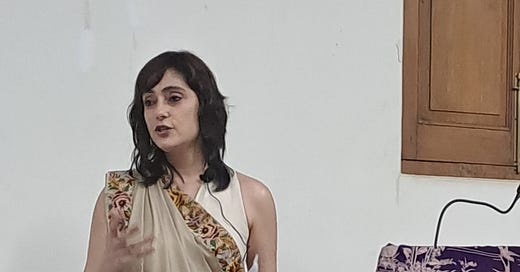



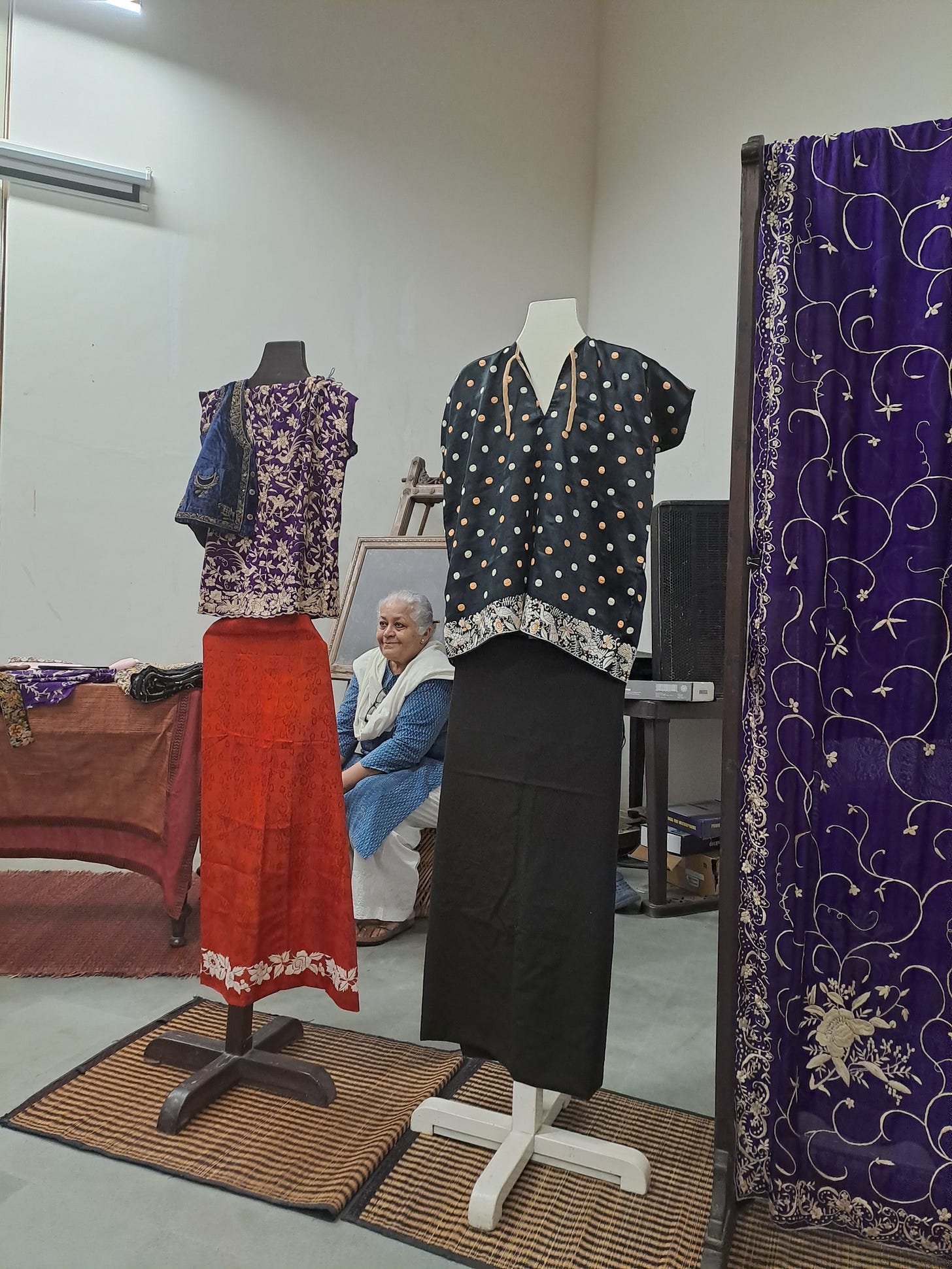
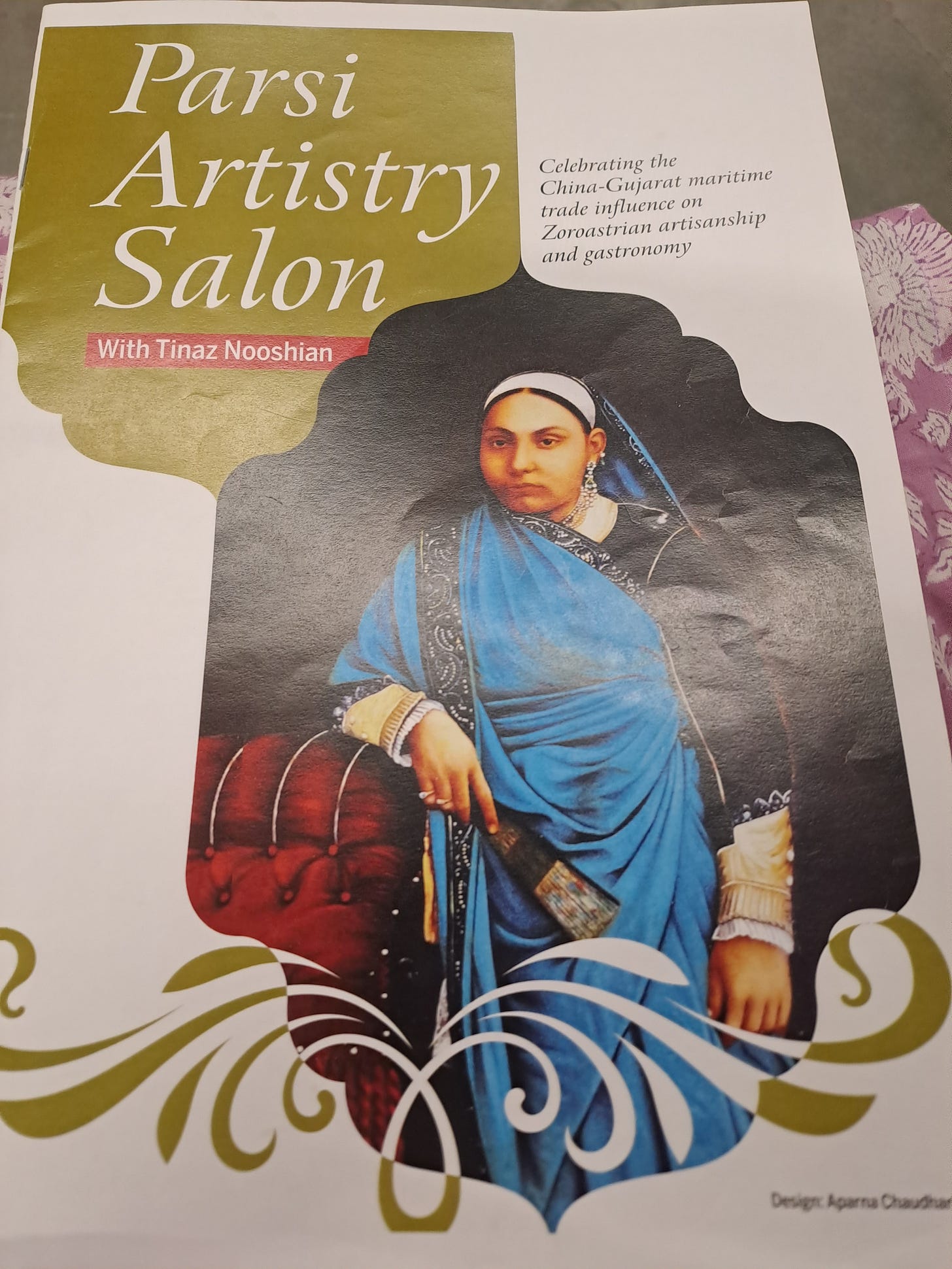
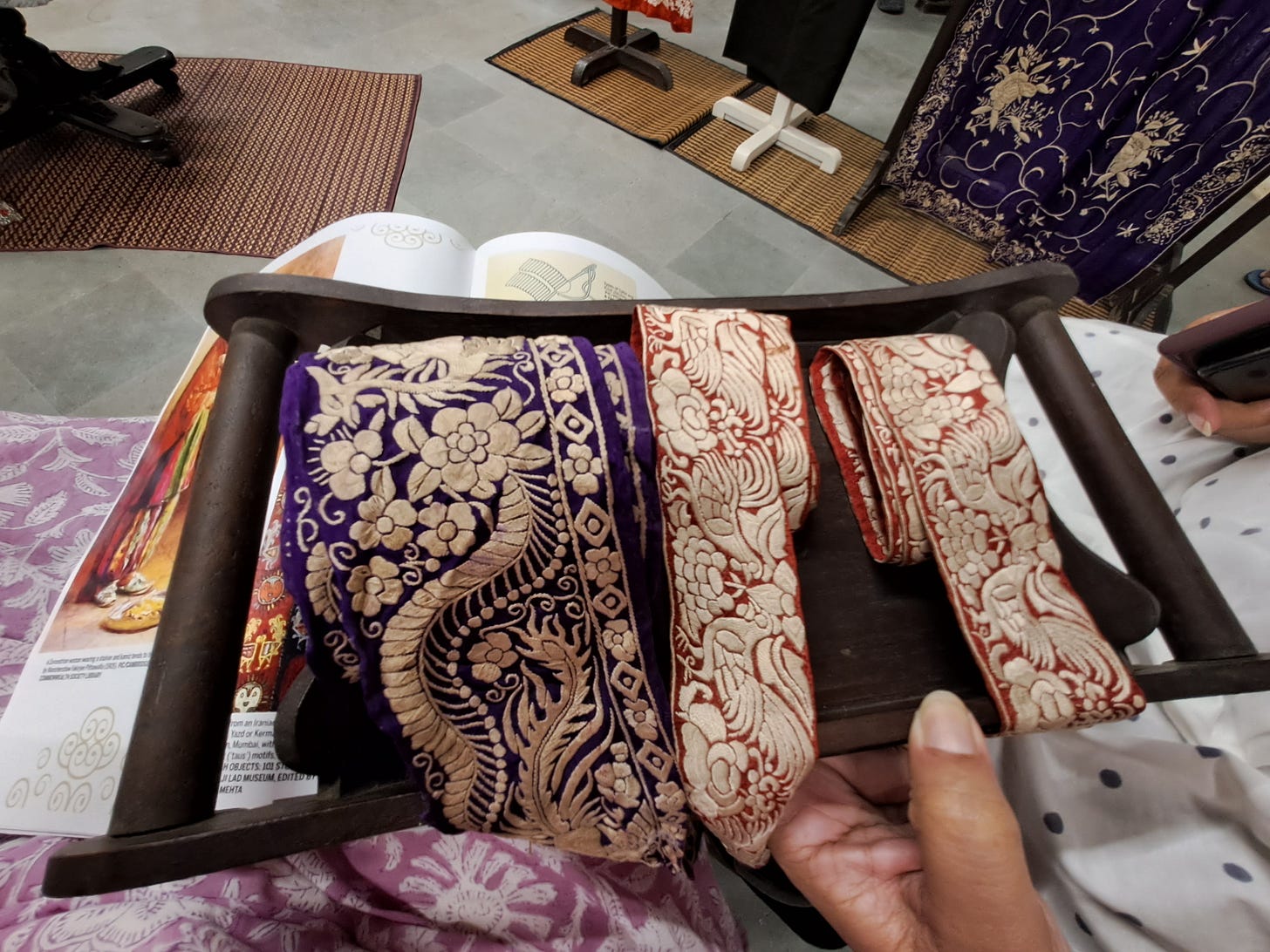
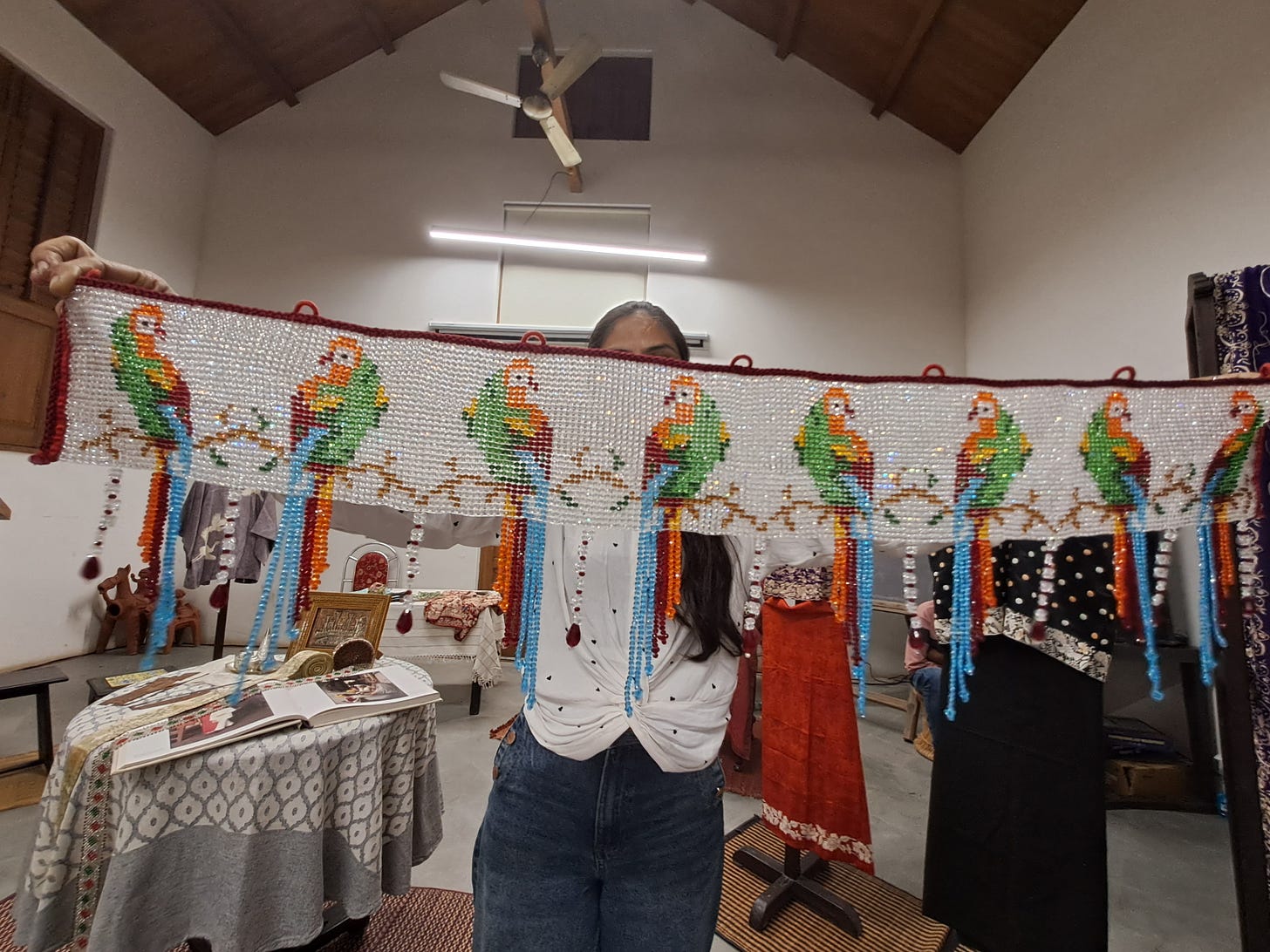
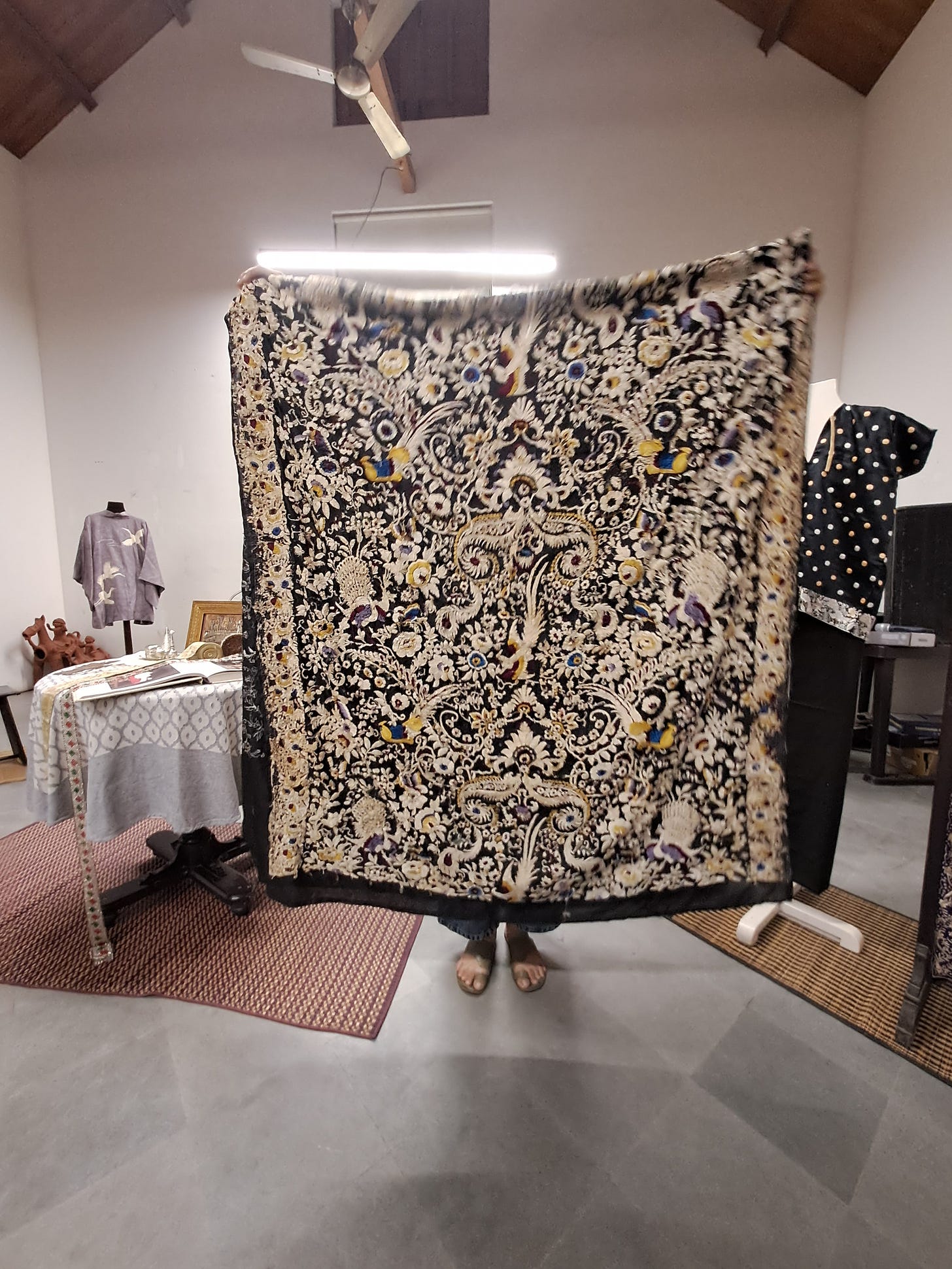
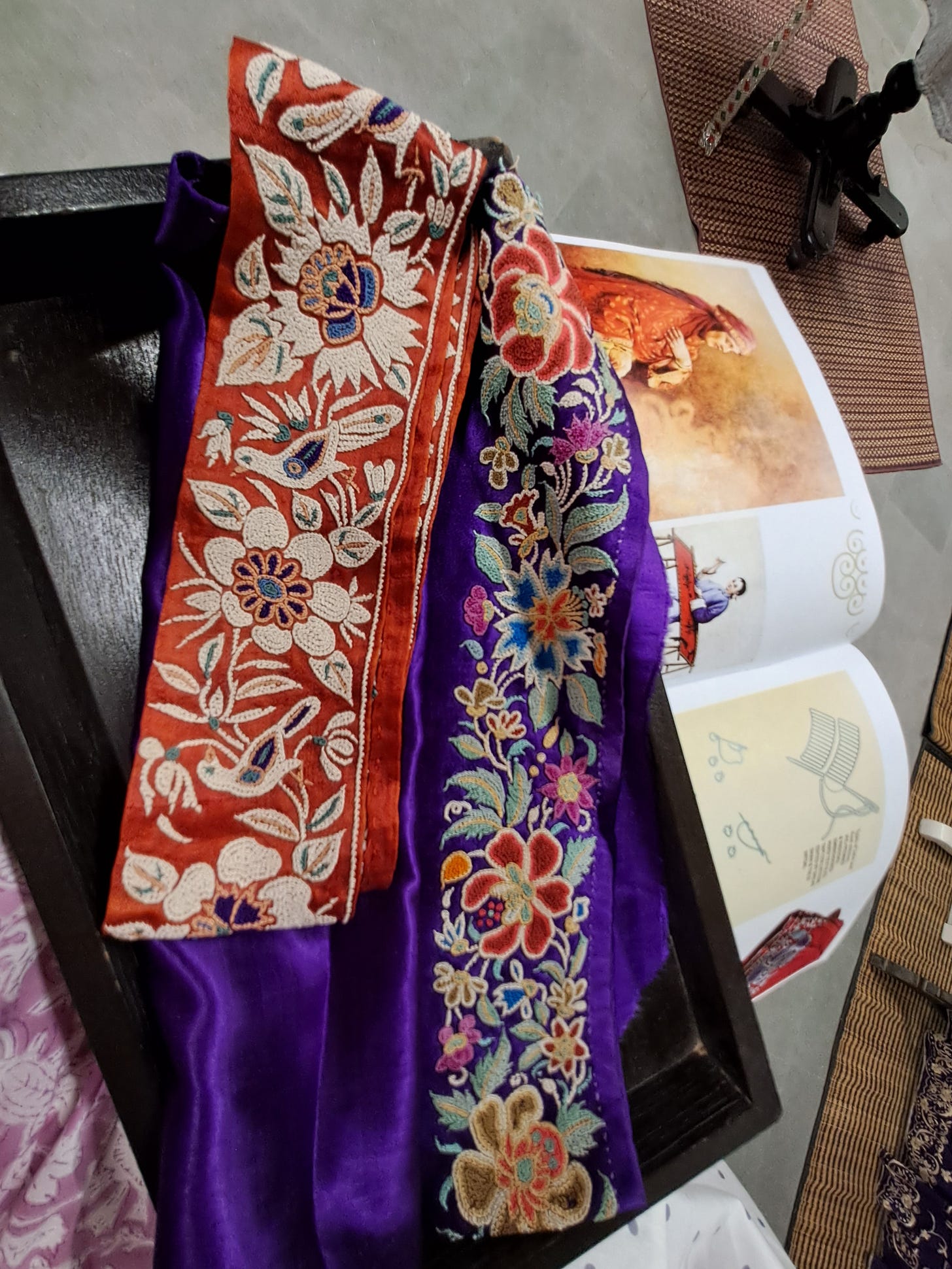
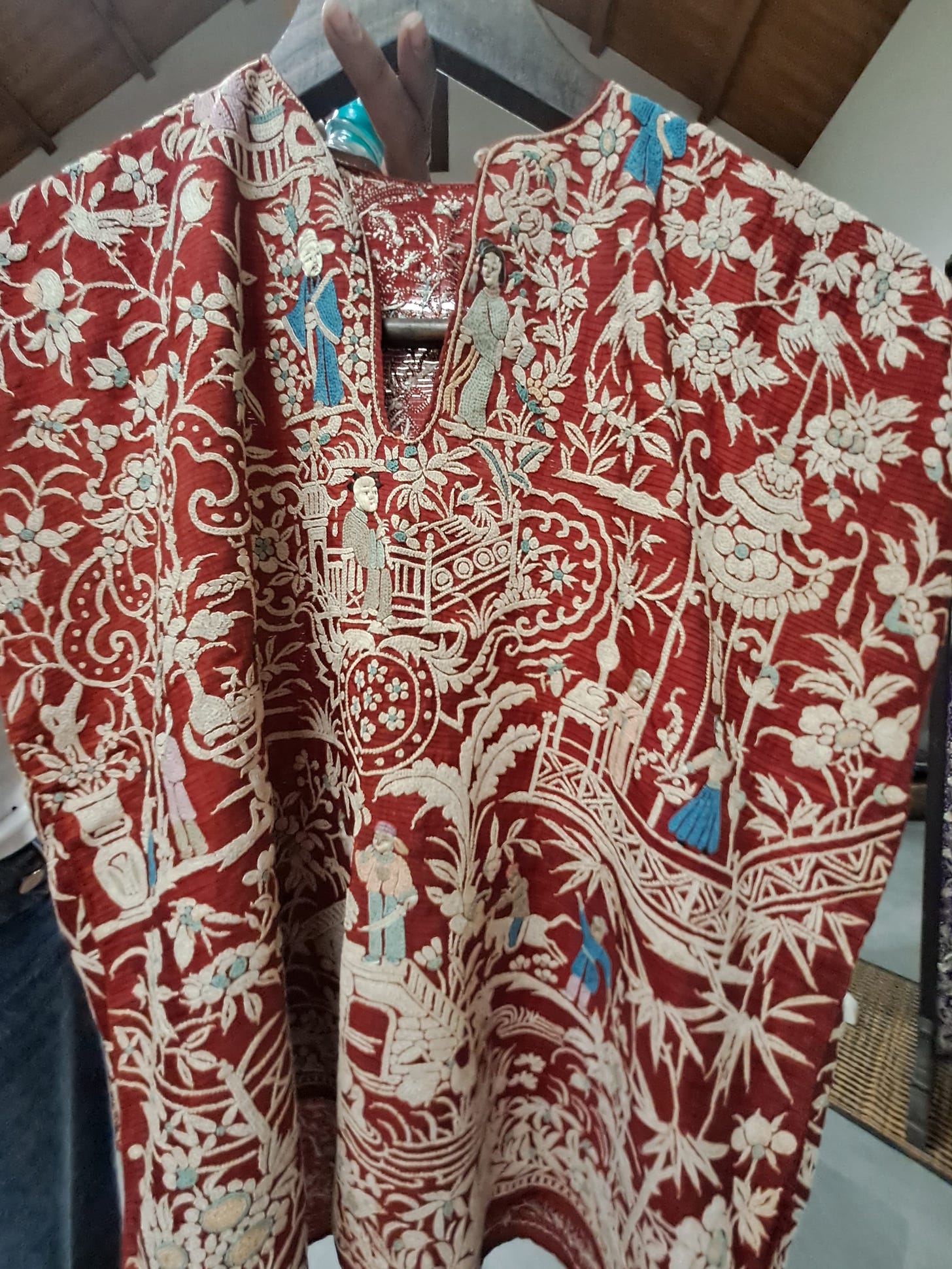
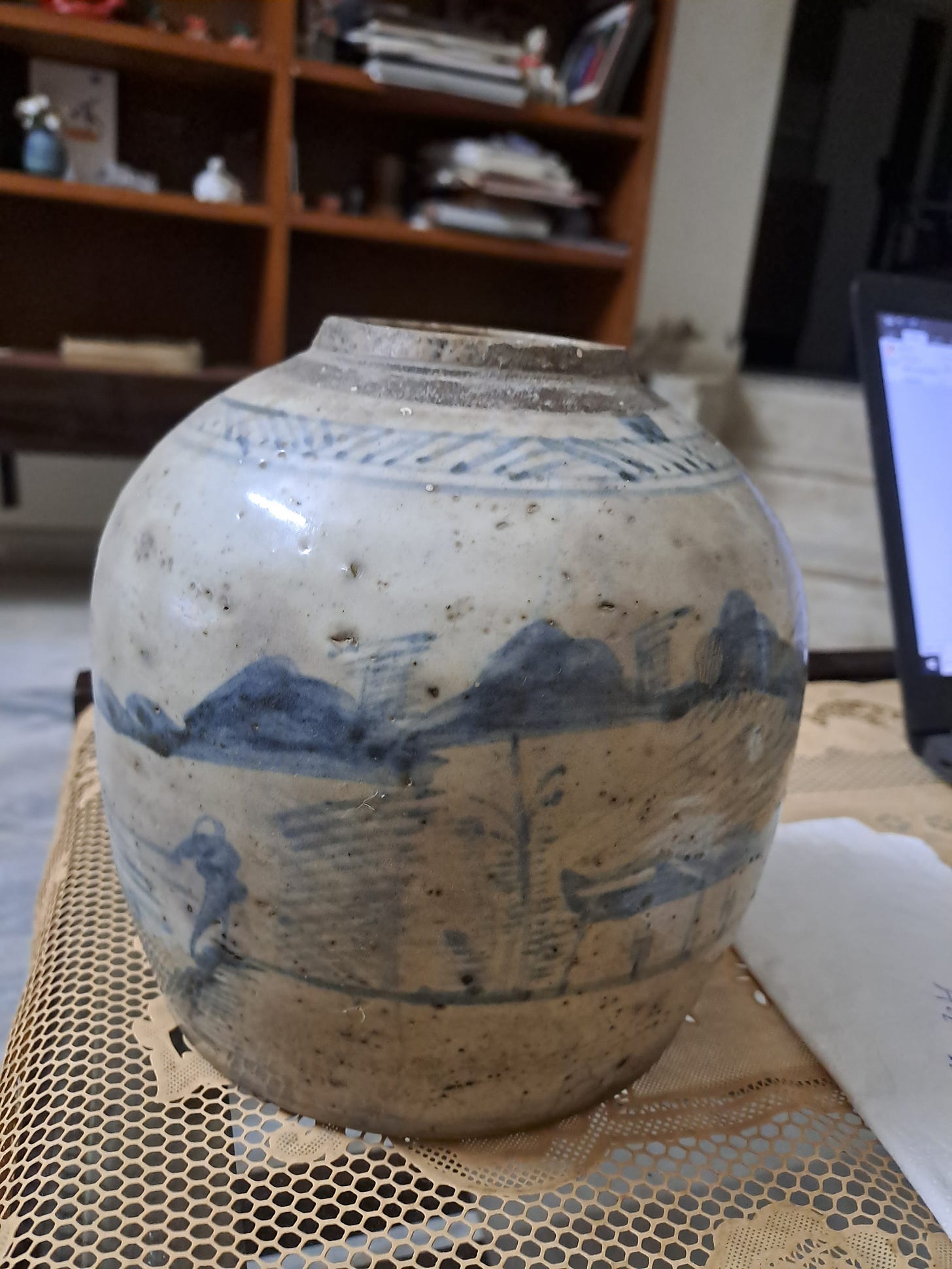
Oh to own these treasures and pass them down generation by generation....the colors so rich and the designs so very intricate...
Finally something good happened in the hometown...
Learned so much by reading your post! Fascinating history and I knew some of it because of how much Amitav Ghosh talks about Parsees in the Ibis trilogy.